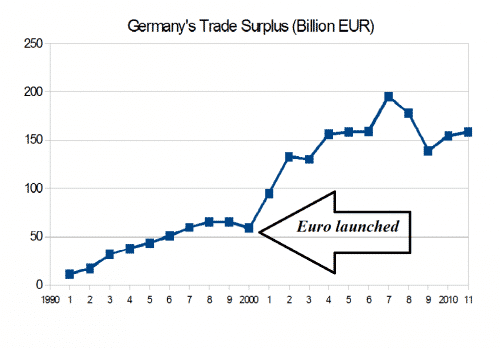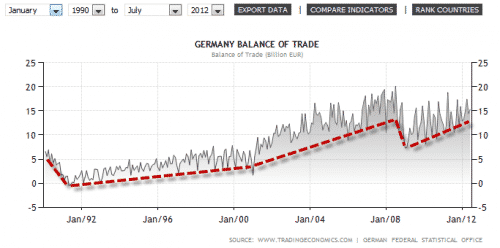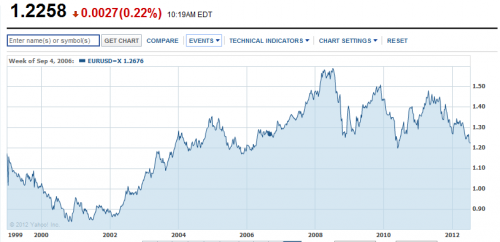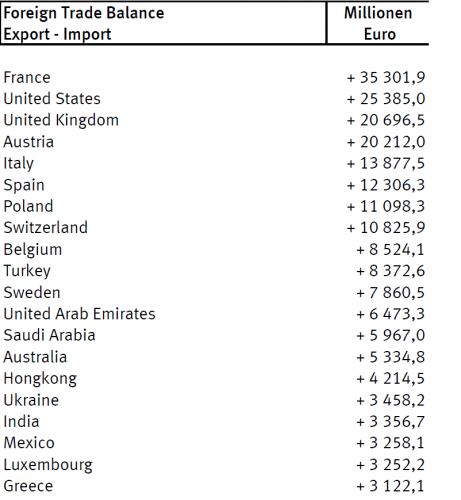Chart of the day: Germany biggest winner from euro fixed exchange rates
A hedge fund friend of mine who is interested in the euro crisis pointed out a nice chart to me. It shows Germany’s trade balance from 1990 to present.
Source: Sudden Debt
As you can see from the chart, Germany had a relatively small trade surplus in the early 1990s. But after the euro was formed, the surplus vaulted higher. The clear implication is that Germany’s export sector benefitted hugely from the introduction of the euro.
Just to double-check, I took a look at the monthly data and here’s the resulting chart:
Source: Trading Economics
I have drawn in trend lines to show you how the post-reunification plunge followed by a steady upward trend that kinks higher when the euro is formed. During the financial crisis, Germany was hit very hard as its exports collapsed. But when the crisis ended, the pre-crisis, post euro upward slope to surpluses re-asserted itself.
One could offer a few plausible reasons why Germany’s higher positive trade balance kinked upward after the euro was introduced. Here are the main three.
- Intra-euro fixed exchange rate caused Germany to gain.
- Euro itself collapsed, resulting in Germany’s higher positive trade balance.
- Export cost benefits vis-a-vis export competitors because of wage suppression.
If you look at the post-euro EURUSD exchange rate, you can see that the euro was appreciating from 2002 all the way until the crisis in 2008. That would imply lower exports then.
Source: Yahoo! Finance
That leaves you with Germany’s increased exports benefitting mainly from domestic wage suppression and fixed exchange rates within Europe. This makes sense as Sudden Debt notes that:
A full 41% of Germany’s surplus comes from France, Italy, Spain and (gasp!) Greece, where Germany is still exporting like gangbusters despite the poor country being in its fifth year of recession. In fact, Germany’s trade surplus per person with Greece is 3.6 times bigger than that with the U.S. (290 euro per Greek versus 81 euro per American).
My conclusion, therefore, is that Germany is the biggest winner from euro fixed exchange rates as the euro’s introduction has allowed the German economy to grow at a reasonable rate in spite of weak domestic demand. If the euro had never come into being, the weak German domestic economy would be a much larger problem. I would also expect that another crisis would repeat the experience of 2008-2009, when Germany’s trade surplus fell precipitously.
Source: One Picture Is Worth A Thousand Marks (or Merkels)
Note: In trade theory, exports are usually seen as a cost of free trade because it means using productive capacity for export instead of for domestic consumption. The benefit of free trade is the (lower cost) imports. Nonetheless, export-oriented countries like Germany are willing to bear this cost in order to boost production and output.




Comments are closed.